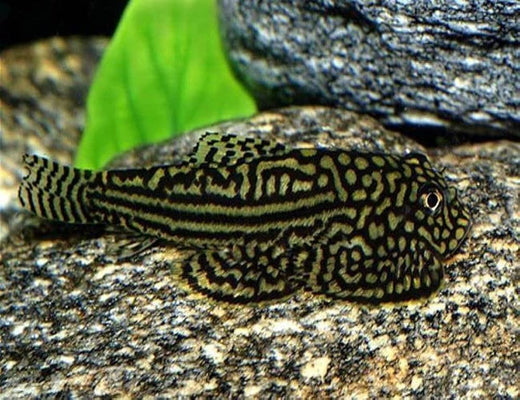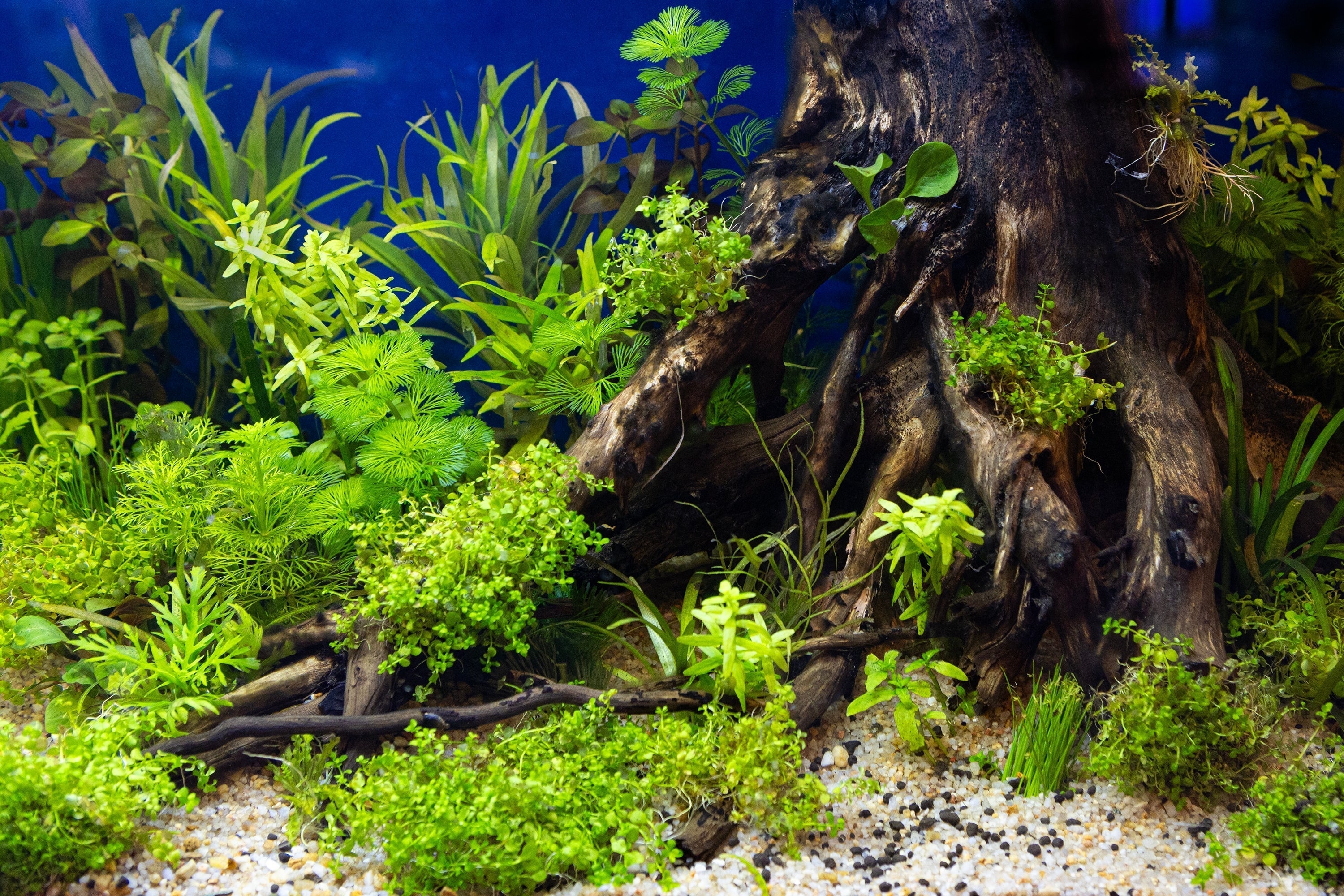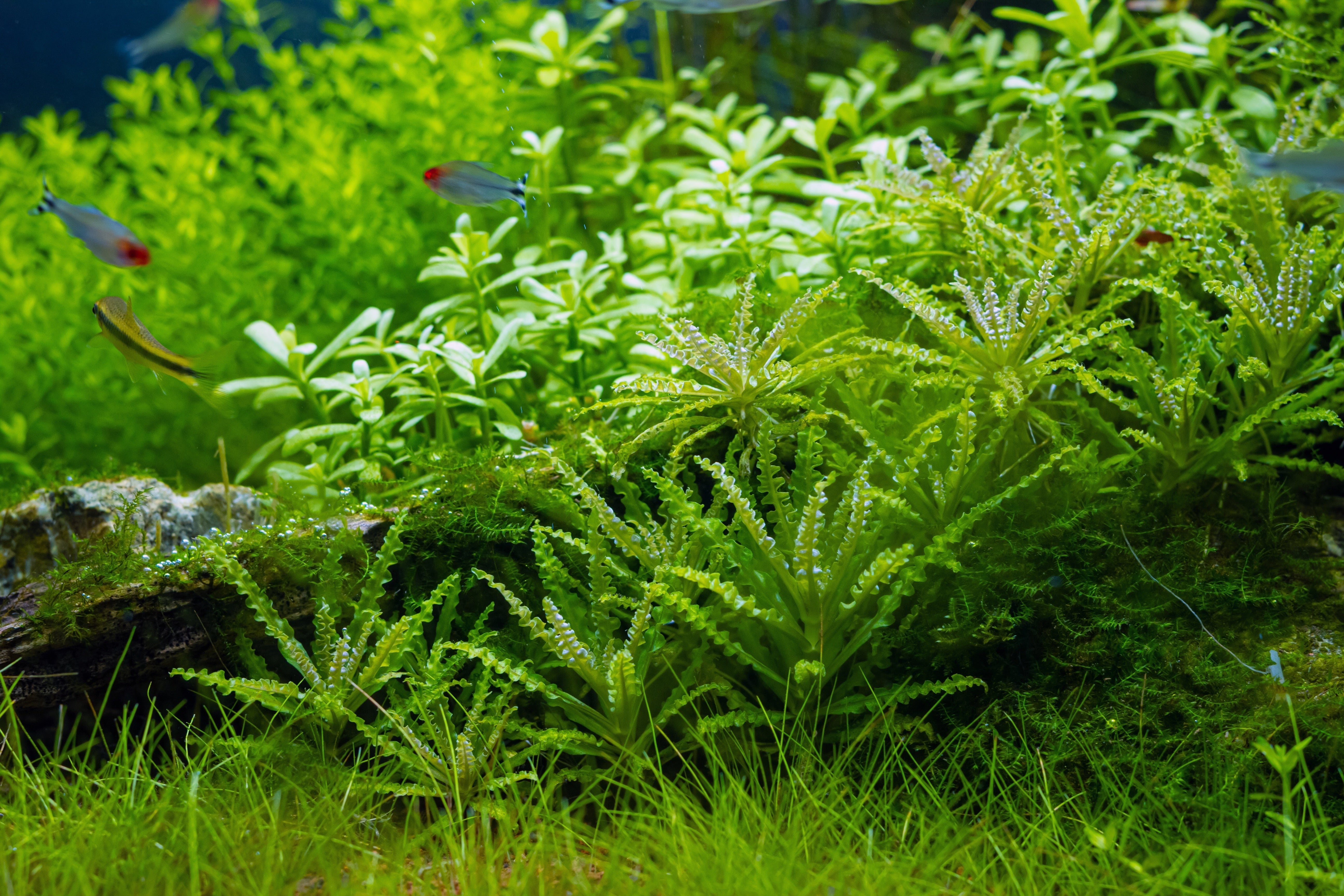Table of Contents
Hillstream loach (scientific name: Sewellia lineolata) is one of a kind. It attracts your attention with its peculiar appearance, a torpedo-shaped body with wing-like pectoral and pelvic fins. If you watch it long enough, you may feel they are indispensable to your tank.
Hillstream Loach Wild Habitat
Aquarists sometimes mistake this Loach for a Catfish or mini-stingray due to many similarities, but it is neither of them. Hillstream loaches are freshwater fish. They are indigenous to Asia (mostly found in Vietnam, Laos, and Cambodia). The place, if you know it well, will reveal lots of interesting stories about this fish.
Indeed, the streams and rivers there built them a perfect body to cope with strong currents. Their beautiful figure allows them to pass over and withstand fast-moving water. Moreover, you may notice this little fish loves spending most of its time crawling on the rock’s surface. The “leisure” activity appears to be their habit in the wild since the rivers tend to have lots of rocks. Not only that, Asia is also known for its regular heavy rainfalls, which often stir up sediment and cause fluctuating water parameters. The distinctive geographic feature, by accident, makes the loach quite hardy and able to adapt to a wide range of environmental conditions. Given that, taking care of the Hillstream Loach turns out to be a piece of cake. As long as you imitate their natural habitat, your fish will happily thrive in your aquarium.
Hillstream Loach Tank Requirements
You will need a quite large tank for your Loaches. Generally, we suggest a 30-gallon tank for a small group. However, a bigger size should be seriously considered if you want to raise more loaches or keep them with other fish.
It is common for you to deem our suggestion fairly weird or even ridiculous, considering how small these fish are (average size of 2-3 inches in length). In fact, not at all. Hillstream loach prefers fast-moving water flows. And only large aquariums equipped with a powerhead, you may be able to generate consistent and yet non-disruptive water currents. In a “teeny-weeny” tank, this is unlikely to happen. Besides, oxygen is another reason. This loach needs oxygen-rich water that is created in strong water flows. Lacking which, they may not thrive to their utmost.
Hillstream loaches are bottom-dwellers. If you don’t see them creeping on rocks, they would have been somewhere on your tank’s glass, gliding little by little. The movement may sometimes cause them injuries if your substrate has sharp edges. In order not to let this happen, we highly recommend using sandy or round-shaped gravel/ pebbles while keeping the loaches. Further, your aquarium should be covered with a tight lid, as the loaches are well known for their great climbing talent.

(Image of a hillstream loach slowly crawling on a rock surface)
Live aquatic plants play an important role in the living environment of hillstream loaches. They replicate their natural habitat as well as provide lots of hiding places so they can conceal themselves when being threatened. Of all the typical aquatic plants, Java moss, Marimo Moss Balls, Anubias plant, such as Anubias Nana and Anubias Barteri, green cabomba, and hornwort are the best. With them and several decorative items (such as driftwood, rock caves, etc.), you can freely orient a wonderful landscape for your aquarium.
Hillstream Loach Tank Water Conditions
Unlike many other freshwater species, Hillstream Loaches prefer cooler ranges of temperature along with stable parameters.
- Ammonia and Nitrite: 0 ppm
- Nitrate: less than 20 ppm
- GH: 4 – 12 dGH
- KH: 4 – 8 dKH
- pH: 6.5 – 7.5
- Temperature range: 68° - 75° F (around 20° - 23.9° C)
- Water change: 30% every week
Hillsteam Loach Tank Mates
Considering the above conditions, Danios and Rasboras are the safe choices for your tank. Indeed, the Hillstream Loach’s favorite water temperature range really rules out quite many tropical freshwater fish that can get along well with it. This also means you should always check the recommended temperature ranges first whenever coming to the “potential candidates”.
Although these Loaches are peaceful, calm, and mind their own business all the time, there is still a chance they will show aggressive tendencies. Most of the cases are related to territorial issues. This is why, despite being encouraged to keep them in groups, you need to be sure they are provided with ample spaces and hiding places so as to mitigate the tension.
Tips: As they spend most of their time at the bottom of your tank, you could consider keeping them with other fish that often dwell in the middle or top of the aquarium. This way not only reduces the territorial behaviors of hillstream loaches but also diversifies your fish community.
It would be a pleasant moment to observe a colony of fish joyfully splashing around in the middle of the aquarium, while your hillstream loaches scoot little by little at the bottom without a care in the world!
Hillstream Loach Diet
Hillstream loach is a huge fan of algae and biofilm. They will happily clear all the algae and biofilm in your tank (another explanation for their liking of rock, especially those heavily covered with algae).
Nonetheless, a well-balanced diet for this Loach should be strictly followed to ensure its healthy condition. The Hillstream are omnivores and able to consume various commercial fish food such as insect larvae, tubifex, daphnia, algae wafers, and frozen or live brine shrimp. They can also accept fish flakes and pellets as long as they are small enough to fit their mouth.
For the frequency, you could feed them once or twice a day with an amount sufficient for them to take in in 2-3 minutes.

Image caption: It is quite pleasing to watch hillstream loach gliding little by little on the bottom of the tank
Hillstream Loach Breeding
This is not an easy task when it comes to the Hillstream Loach. They are considered a very difficult-to-breed species in home aquarium conditions. Nevertheless, who knows if you may be accompanied by the goddess of luck.
The process occurs when the male loach starts its special “dance” to seduce the female. If she accepts, she will follow that male. At this time, the male begins to dig a nest in the substrate where the female will lay eggs later. In just about 2 weeks, the eggs will totally hatch.
Hillstream loaches are one of the rare cases that do not harm their offspring. Hence, you can confidently keep the young in the same aquarium.
Hillstream loach is truly a highlight for your aquarium. If you take proper care of them, they may stay with you for 8-10 years.
At Splashy Fish Store, we supply a wide range of Loach fish for sale, especially Hillstream loach for sale, which come from reliable sources. We further guarantee that all of our hillstream loaches will go through the quarantine process for a period of 14 days before sale. We care about the quality and strive to provide you with the best we can. Visit our tropical fish store for other freshwater fish for sale, freshwater shrimp for sale, live aquatic plants for sale, and aquarium supplies.
Hillstream Loach Frequently Asked Questions (FAQs)
Will Hillstream Loach eat shrimp?
Hillstream loaches are generally peaceful fish with a diet primarily focused on algae, biofilm, and small microorganisms. While they are unlikely to actively hunt healthy shrimp, they may consume baby shrimp or weakened ones if they come across them. If you plan to keep Hillstream loaches with cute shrimp, providing ample hiding spaces like moss or caves for the shrimp is essential. Popular shrimp-safe tankmates include cherry shrimp and Amano shrimp.
Are Hillstream Loach aggressive?
No, Hillstream loaches are not aggressive. They are peaceful, community-friendly fish that prefer the company of their own kind or other non-aggressive species. However, they can exhibit territorial behavior, especially in smaller tanks or when competing for algae-rich areas. This behavior is typically harmless and rarely leads to injury.
How big do Hillstream Loach get?
Hillstream loaches are relatively small, typically growing to about 2-3 inches (5-7 cm) in length. Their compact size makes them suitable for smaller aquariums, but they thrive best in tanks that replicate fast-flowing streams. A tank size of at least 20 gallons with a strong current and oxygen-rich water is ideal for their growth and well-being.


























